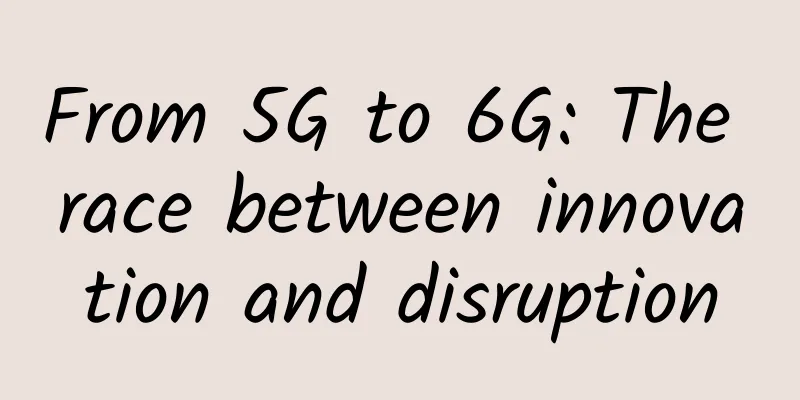One year after 5G commercialization, the terminal hardware market still has ten times more room to grow

|
In nine days, China's 5G commercialization will celebrate its first anniversary. At this point in time, some people have begun to reflect on the degree of acceptance of 5G. Regardless of the degree of acceptance, there is still ten times the room for terminal hardware to improve. Looking back at history, 5G faces the following problems:
The transition from 3G to 4G was far more chaotic than it is today Compared with today's three major 5G operators moving forward in unison, the era of 3G to 4G in 2008 was even more chaotic. In 2014, China Mobile obtained the TD-LTE 4G license, but it was not until a year later that the other two operators obtained the 4G license. Regardless of whether this approach was reasonable at the time, the user experience of 3G to 4G one year later was also miserable. However, the biggest difference between the 4G era and the 5G era is that users need to switch from traditional SIM cards to new USIM cards. In the early years, with the popularization of smartphone hardware, many users have already converted their cards to USIM cards, and the emergence of 4G networks has accelerated this process, which means that the current 5G application situation is normal. Terminal hardware still has 10 times the market space At present, the total sales volume of 5G mobile phones in the Chinese market is 107 million, and the number of 5G users has long exceeded 150 million. Logically speaking, this scale of application groups has exceeded half of the US market, but there is still a huge 5G mobile phone market space in China with 10 times of room for expansion. Such data has reflected another problem. The final hardware manufacturers are naturally an opportunity to show their talents, but for the development of the entire 5G industry, it is not just numbers that can explain it: 5G technology is far from mature Last week, Wu Hequan, an academician of the Chinese Academy of Engineering, talked about the development of 5G in the past year at a conference. He believes that although China's 5G commercialization has achieved certain results, it still faces many problems. The problems that have emerged since the commercialization of 5G are concentrated in the following three points: immature technology, high operating costs, and difficulty in digesting costs. Therefore, looking back on the past year, 5G technology has developed, matured, and popularized. Insufficient development of industrial application scenarios Wu Hequan mentioned that 5G technology is immature, which can be interpreted in many directions, but what is most closely related to people's real life is that the application scenarios of 5G are still relatively single. In the past year, many related reports have talked about the scenarios in which 5G can be used after its popularization. At the beginning of the COVID-19 pandemic this year, hospitals in Wuhan also used 5G for remote consultation. Unfortunately, the scenarios in which people are exposed to 5G in their lives are still only related to mobile phones. The envisioned 5G linkage with autonomous driving and the Internet of Things has not yet arrived. There are pitfalls in operators' 4G and 5G packages Many operators have launched 5G packages for 4G phones. Both 5G and 4G use USIM cards, so users can upgrade to 5G packages without changing cards or numbers. However, the problem is that although the speed of 4G mobile phones will be faster when using 5G packages, this is not the real use of 5G network. While the country has invested a lot of money, there are still many 5G users who are just experiencing 5G packages and not really using 5G networks, which is undoubtedly a waste. The choice of 5G packages is shrinking However, at present, the marketing strategies of telecom operators have also begun to change. At present, the types of 4G packages of the three major operators have been significantly reduced, and the prices are far less attractive than 5G packages. There are only two 4G packages below 50 yuan, and the tariffs of other 4G packages have no obvious advantages over 5G. This promotion model further exacerbates the above problem, that is, the number of 5G users is constantly increasing, but due to cost reasons, the popularization speed of 5G mobile phones is far slower than that of 5G packages, so waste is inevitable. Conclusion Judging from the current status of 5G development, if 5G networks are to be truly popularized, it will take at least another year for users, operators, and 5G technology to become more mature. Give 5G more time. According to the timetable of 3G to 4G and 4G to 5G, it will take at least 5 years for 5G to be popularized. |
<<: WeChat tests voice progress bar function, netizens: finally it's here
>>: How to set up a backup internet connection for your home office
Recommend
DogYun Chongqing VPS monthly payment starts from 70 yuan, 2 cores/4GB memory/60G SSD/50Mbps bandwidth
Last month we shared the news that DogYun launche...
The emergence of 6G technology: growth opportunities for modern industry
The potential of 6G technology will become appare...
What happens behind the scenes when the Ping command is issued?
01 Overview [[274853]] As for the ping command, I...
Byte One: Is there any difference between HTTP long connection and TCP long connection?
Hello everyone, I am Xiaolin. A reader sent me a ...
Mid-year review: 10 hottest web startups in 2021
Rising Star If the IT industry has learned anythi...
The revenue and profits of the three major operators have skyrocketed. Will the income of employees also increase at the same time? What does it have to do with the employees?
Recently, the three major operators have released...
Five common OSPF problems
I am Man Guodong, a lecturer at 51CTO Academy. On...
How to promote 5G packages in small and medium-sized cities
From the perspective of package value, the curren...
Understanding the differences and application scenarios of TCP and UDP protocols in one article
[[276674]] TCP (Transmission Control Protocol) an...
Can 5G extend the life of HTC’s desperate VR business?
5G is like a "tonic pill" that has sudd...
The U.S. "Officialdom Exposed" in the ZTE Incident
The much-watched ZTE ban incident has experienced...
The impact of drone technology and use cases
Before we dive into the ways drones can make the ...
What are the deployments and arrangements for 5G in 2022? MIIT responds
On January 20, the State Council Information Offi...
How does 5G use spectrum? This article tells you everything!
As we all know, wireless spectrum resources are t...
IT Knowledge Encyclopedia: Detailed Explanation of IPv6
As an Internet user, you have more or less heard ...









